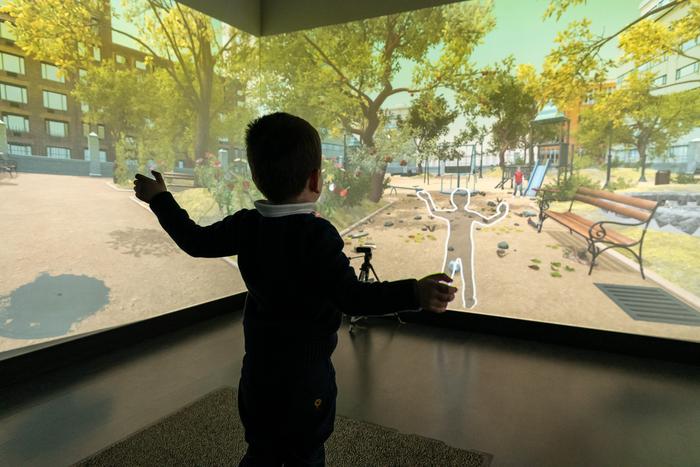A groundbreaking development in autism research has emerged from the Human-Tech Institute at Universitat Politècnica de València (UPV). A dedicated team of researchers has introduced a groundbreaking system that leverages virtual reality (VR) along with artificial intelligence (AI) to enhance early detection of Autism Spectrum Disorder (ASD). These innovations represent a significant leap forward in terms of accuracy and accessibility, as the new system claims to achieve over 85% accuracy in diagnosing ASD—an outcome that markedly outperforms the traditional methods currently employed in clinical settings.
Traditional diagnostic methods for autism have long relied on subjective psychological tests and interviews. These methods are often time-consuming and can sometimes provide misleading results due to varying interpretations by the practitioners involved. In contrast, the UPV team’s new approach removes much of the human subjectivity from the equation, instead employing a standardized process that utilizes objective data collection and analysis, resulting in a more consistent and reliable assessment of children’s behaviors.
The core of this new detection system is its impressive utilization of VR technology. By immersing children in relatable virtual environments, the system captures their movements and behaviors in a manner that mirrors real-life interactions. This approach minimizes the potential for artificial responses that can occur in controlled laboratory settings where children may feel anxious or uncomfortable. As a result, the responses gathered during these VR sessions are more authentic, providing a clearer window into the child’s behavior and potential symptoms of autism.
Mariano Alcañiz, the director of the Human-Tech Institute, emphasizes the advantages of this technology by explaining that the VR environment mimics common scenarios in children’s daily lives. Such contextual realism fosters genuine responses, as children engage with the stimuli presented. This is a critical factor, as ASD can manifest in various ways, and understanding these behaviors requires nuanced observation that can be challenging to obtain through traditional assessment methods.
The technical sophistication of the combined VR and AI system lies in its ability to analyze a multitude of behavioral biomarkers related to movement, activity levels, and even gaze direction. By integrating these measurements, the system can standardize autism detection and generate a diagnostic report that is not only efficient but also highly accessible. As Alcañiz points out, the system is constructed to operate with components that are commercially available and comparatively cost-effective when stacked against conventional diagnostic evaluations.
The innovative approach does not conclude with the VR setup alone; the AI aspect plays a pivotal role as well. Researcher Alberto Altozano, who has contributed substantially to the AI modeling alongside Professor Javier Marín, explains that their work focuses on improving traditional AI methodologies. By integrating deep learning techniques, the team has developed a model capable of identifying ASD more accurately across various tasks within the VR framework. The enhanced precision achieved through this model not only strengthens the reliability of diagnostic outcomes but also expands the potential applications of VR in observing and understanding the complexities of behavior associated with autism.
Collaboration has been key in the evolution of this research initiative. Over the past eight years, the UPV team has refined its approach through partnerships with specialized organizations, specifically working alongside the Red Cenit cognitive development center. This long-term collaboration has facilitated the exploration of numerous methodologies to validate the semi-immersive VR system, making it truly evidence-based. The culmination of this framework was highlighted in a recent doctoral thesis presented by researcher Eleonora Minissi, further supporting the effectiveness of various biomarkers collected during virtual experiences.
The findings from Minissi’s research underline a notable aspect of ASD diagnostics; while social-visual attention metrics have traditionally garnered significant focus, atypical motor patterns have often been overlooked. Her work emphasizes that motor activity, due to its ease of measurement and effectiveness in identifying autism traits, should be considered a promising biomarker in the quest for an earlier diagnosis. This insight into motor characteristics not only expands the existing understanding of autism but lays the groundwork for future research avenues.
Equipped with this new AI model’s capabilities, further explorations into the nuances of ASD are on the horizon. Researchers are now keen to analyze how motor characteristics may vary across different activities, such as walking or speaking. Such studies could yield vital insights not only for clinical applications but also for families and educators seeking to create supportive environments for autistic children.
The promise of virtual reality and sophisticated artificial intelligence to reshape autism diagnostics comes at a critical time when the prevalence of ASD diagnoses continues to rise globally. The integration of these advanced technologies could pave the way for more immediate and accessible interventions, potentially altering the trajectory of children’s developmental progress in substantial ways. The intersection of technology and mental health diagnostics, particularly for conditions like autism, underscores a transformative shift in how such disorders are identified and addressed.
In summary, the UPV team’s innovative approach to harnessing VR and AI offers a beacon of hope for enhancing ASD diagnosis and treatment efficacy. As the research unfolds, there is optimism regarding the real-world applicability of such methodologies, fostering significant advancements not only in clinical practices but also in educational settings and beyond. This research signifies a critical step forward in the journey toward understanding autism better, ensuring that children receive the timely support they need to thrive.
Subject of Research: People
Article Title: Introducing 3DCNN ResNets for ASD full-body kinematic assessment: A comparison with hand-crafted features
News Publication Date: 8-Jan-2025
Web References: Link to Article
References: None
Image Credits: Credit: UPV
Keywords
Autism, Virtual reality, Image analysis, Children, Medical tests, Biomarkers, Artificial intelligence.




